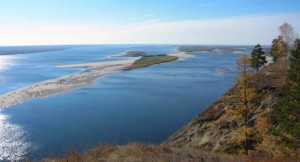Study finds wetter Arctic could influence climate change
September 5, 2012

Marmian Grimes
907-474-7902
9/5/12
Increased precipitation and river discharge in the Arctic has the potential to speed climate change, according to the results of a study led by Xiangdong Zhang, a scientist at the University of Alaska Fairbanks International Arctic Research Center.
“As the Earth’s climate continues to change, the high-latitude North is becoming even wetter than before,” Zhang says. “In particular, air moisture, precipitation and river discharge have increased, leading to a stronger water cycle. These recent changes may intensify climate system interactions and further advance climate change.”
Zhang and his co-authors—including IARC colleague Igor Polyakov—looked at water cycles in the Ob, Lena and Yenesei River drainages in the Eurasian Arctic during the last six decades. They found that atmospheric moisture into the areas increased by an average of 2.6 percent per decade and, consequently, river discharge increased at a rate of nearly 2 percent per decade. That means the three rivers today are dumping almost 39 cubic miles more fresh water into the Arctic Ocean per year than they did in the 1940s.

Their findings are important because studies have suggested that increased air moisture and precipitation, and the resulting increase in river discharge into the Arctic Ocean, can lower salinity and cause warmer surface temperatures, as well as create weaker water circulation in the Atlantic Ocean. Those things in turn can affect multiple biological and weather systems, as well as things like sea ice and coastal erosion.
The study results were published in the journal Nature Climate Change. The paper, “Enhanced poleward moisture transport and amplified northern high-latitude wetting trend,” suggests that in addition to changes in local processes such as thawing permafrost and decreasing transpiration by plants, this intensified water cycle also depends heavily on changes in large-scale atmospheric dynamics.
NOTE TO EDITORS: Zhang is available for email interviews by sending questions xdz@iarc.uaf.edu. Photos are available online at www.uafnews.com.
MG/9-5-12/059-13


